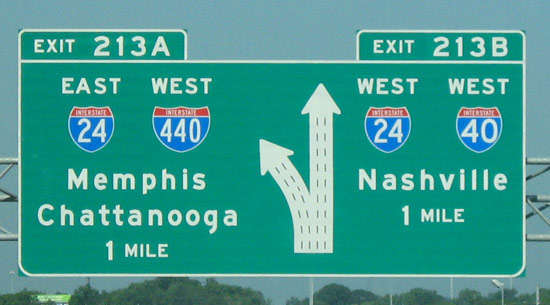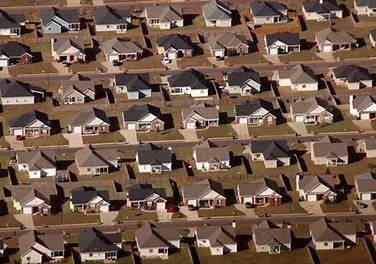This post is written by Jimmie Covington, veteran Memphis reporter with lengthy experience covering governmental, school, and demographic issues. He is a contributing writer with The Best Times, a monthly news magazine for active people 50 and older.
By Jimmie Covington
Nashville moved ahead of Memphis in city population in 2015 rather than in 2016, according to revised census estimates released last month.
And, the most recent estimates, for July 1 last year, show Nashville at 667,560 and Memphis at 652,326. The report reflects that the number of Memphis residents is continuing downward while Nashville is growing.
Nashville had moved up from 664,762 on July 1, 2016, while Memphis dropped from 653,369.
This year’s report shows the populations of the two cities on July 1, 2015, as 656,962 for Nashville and 654,753 for Memphis. The estimates report issued last year reflected that on July 1, 2015, Nashville had 654,078 residents and Memphis had 654,454.
Revised Numbers
Each year between the 10-year federal census counts, the U.S. Census Bureau issues population estimates. And in each of these reports, the previous years’ estimates are revised based on additional information that has become available, including updated birth and death statistics.
Births and deaths are major factors in population change along with the numbers of people moving in and out of a location.
Nashville is now the nation’s 24th largest city and Memphis ranks 25th.
After the results of the 2020 Census are in, the Census Bureau will go back and revise the yearly estimates for all locations to make them consistent with the census counts in 2010 and 2020.
When that process is completed, the estimates for Memphis and Nashville for July 1, 2017, and all the other years between the two censuses will undoubtedly differ from those in this year’s report and all the other reports issued between the census counts.
Big Shelby
Basically, if as expected, the 2020 Census shows Nashville with more residents than Memphis, the exact year in which the change occurred will still be just a guess.
Nashville and Davidson County have a consolidated city-county metropolitan government. In reporting city populations, the Census Bureau refers to the Nashville city population as the Nashville-Davidson Metropolitan Government Balance. The population numbers of six incorporated municipalities that are either entirely or partly located in Davidson County are excluded from the Nashville numbers.
Shelby County, including Memphis, continues to have a larger population than Davidson County but the Davidson numbers are growing and the Shelby numbers are declining.
The July 1, 2017, estimates show Shelby with 936,961 residents and Davidson with 691,243. These estimates reflect the 652,236 residents living in Memphis and 284,726 people living in the county outside Memphis. The numbers for Nashville are 667,560 living in the city and 23,683 living in Davidson in the municipalities outside the city.
Hispanic Power
Numbers through the years show that Nashville’s greater growth in Hispanic population has been a significant factor in Nashville’s passing Memphis in city size.
An interesting figure in the Davidson County numbers reflects that more people are moving out of the county to other counties in the area and elsewhere in the United States than are moving into Davidson from elsewhere in the area and the country.
According to the estimates, Davidson between 2016 and 2017 had a net domestic migration loss of 2,397 residents.
The 2000 Census was the first to show the Nashville metro area, which has 14 counties, ahead of the nine-county Memphis metro area. The latest estimates show the Nashville area grew from 1,868,855 in 2016 to 1,903,945 in 2017 while the Memphis area grew from 1,345,193 in 2016 to 1,348,260 in 2017.





This is no surprise.
If anybody has been to Nashville in recent years just driving on I-40 past downtown the growth and development and energy of Music City
is everywhere. Big new skyscrapers everywhere and more construction cranes than you can count. In comparison, Memphis is absolutely comatose. It’s sad how much Memphis has gone downhill.
Truly a tale of two cities – one very prosperous and one very poor.
While I’m happy for all of the success and growth in Nashville and Middle Tennessee, it does hurt this native Memphian to see our city and region fall behind.
We can always rely on “Anonymous” for insightful analysis (Anonymous the First in this case; I agree with the second post).
Actually, Bill Dries had an interesting comment along these lines in his Last Word column in this past Wednesday’s Memphis Daily News:
“The first thing most people notice when they realize there is lots of development going on in Memphis but that its quite different than Nashville’s brand of development is that you don’t see nearly as many construction cranes here as you do there. It’s become an un-signature of sorts for what is an ongoing remake of Memphis. We adapt and use for new purposes. We also move institutions around, it turns out.”
https://www.memphisdailynews.com/news/2018/jun/6/last-word-our-un-signature-city-hall-beat-down-and-lamar-avenue/
As we have said too many times to count, no city in the Southeast and few in the U.S. are keeping pace with Nashville. We need to be the best we can be and resist the useless comparisons.
Nashville is becoming like Atlanta or even LA. Traffic is terrible at any hour. We have family there and they vouch for how bad traffic is and how expensive homes have become. A lot of it seems to be renovations of homes that are expanded and remodeled, especially in close in neighborhoods. They are very expensive and easily in the $750,000 plus price range. Yes there are construction cranes everywhere especially new high rise condos, apartments and office towers. We wish we had some of that going on here.
Lori:
From the post: “An interesting figure in the Davidson County numbers reflects that more people are moving out of the county to other counties in the area and elsewhere in the United States than are moving into Davidson from elsewhere in the area and the country.”
There are many people in Nashville who are concerned that it’s grown too fast and is obliterating its quality of life in the process. African American neighborhoods are declining as residents are are pushed out. Commercial space is being built too quickly to fill up. Etc.
We wish our sister city the best, but our job is not to be an imitation of another city and to wring our hands because another city is doing better. it is to recognize our challenges and opportunities, mobilize the entire community, and capitalize on our own unique assets and distinctive quality of life as a competitive advantage.
Former majority black neighborhoods in Nashville that are close to the urban core (North Nashville, 12 South, Germantown, Wedgwood Houston) are among the most highly desirable for newcomers. They buy and tear down or renovate. It’s very common to pay $350K for a very small lot then tear it down and build a new house for $750K or more. Many black families have done extremely well with such windfalls and many of the have moved further away to areas like Antioch or elsewhere where their money goes a long way. I read that that from moves to Nashville from other places within the state of Tennessee, the biggest place where people relocate from us Los Angeles and Souther California.
MarK H: Good point. I like our form of growth-basically adaptive re-use that maintains the character of our city. We just need a few more attractions to make it more desirable to live here rather than just a fun place to visit. Hot summers are miserable here, we need something along the lines of Nashville Shores. Maybe we can ship it here LOL!
The people in Nashville are really feeling their oats. I think the the developments and construction cranes have gassed them up. Recently on a development forum there was a big time clash between Atlanta posters and Nashville posters. From previous reading experiences, I’ve seen people from other southeastern cities defer to Atlanta as superior. However the Nashville posters were saying Atlanta’s downtown was boring and shuts down after dark. Some of them referred to Atlanta as an unattractive overbuilt ghetto.
And might I add:
The Atlanta posters took it. They were furious no doubt. But they didn’t say anything bad about Nashville so they resorted to self-promotional hype about Atlanta. Apparently they couldn’t immediately think of anything bad to say about Nashville.
Nashville is so off the charts they can smack down Atlanta with no retaliatory attacks. That is unheard of because I’ve seen Atlanta posters go full bore against other cities nationwide.
No doubt that Nashville continues to be on a roll, with no end to all their growth and development seems to be on the horizon. Like any big city, there are problems, namely traffic and affordable housing.
I honestly don’t think Memphis in even a peer city of Nashville these days. The peer cities to Nashville are the likes of Atlanta, Austin, Charlotte, Raleigh/Durham. The peer cities to Memphis are like Birmingham, Louisville, Jackson and Little Rock.
It doesn’t appear that anyone has grasped that the estimates show that the reason that the population in the Nashville portion of Nashville-Davidson has surpassed the Memphis city population at this time is the greater growth in the Hispanic population in Nashville. It is not because more people are moving into Nashville city from other places in Tennessee and the rest of the United States. In fact, the estimates show that Nashville city is having a loss of people to movement within the United States. Nashville city is growing because of births exceeding deaths and because of international migration, much of which appears to be Hispanic. The easiest way for Memphis city to return to population growth and compete with Nashville city for residents would be to attract more Hispanic residents. Given the current political situation, that is not likely to happen. However, please remember that if these estimates are an accurate reflection of what is happening in Nashville city, more non-Hispanic residents are moving away from that city than are moving in. jcov40